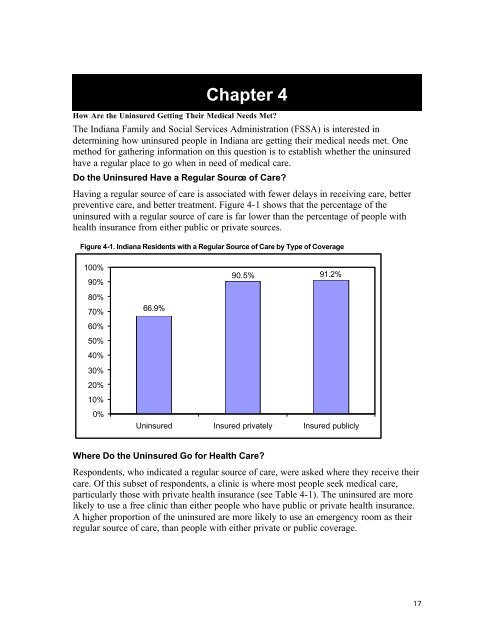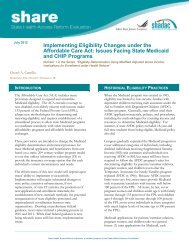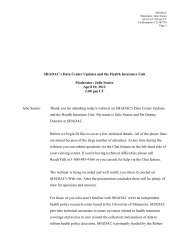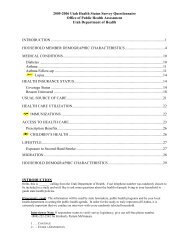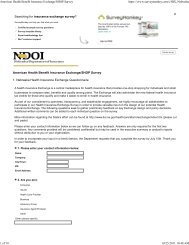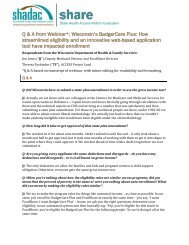2003 findings with survey instrument - Shadac
2003 findings with survey instrument - Shadac
2003 findings with survey instrument - Shadac
- No tags were found...
Create successful ePaper yourself
Turn your PDF publications into a flip-book with our unique Google optimized e-Paper software.
Chapter 4How Are the Uninsured Getting Their Medical Needs Met?The Indiana Family and Social Services Administration (FSSA) is interested indetermining how uninsured people in Indiana are getting their medical needs met. Onemethod for gathering information on this question is to establish whether the uninsuredhave a regular place to go when in need of medical care.Do the Uninsured Have a Regular Source of Care?Having a regular source of care is associated <strong>with</strong> fewer delays in receiving care, betterpreventive care, and better treatment. Figure 4-1 shows that the percentage of theuninsured <strong>with</strong> a regular source of care is far lower than the percentage of people <strong>with</strong>health insurance from either public or private sources.Figure 4-1. Indiana Residents <strong>with</strong> a Regular Source of Care by Type of Coverage100%90%90.5% 91.2%80%70%66.9%60%50%40%30%20%10%0%Uninsured Insured privately Insured publiclyWhere Do the Uninsured Go for Health Care?Respondents, who indicated a regular source of care, were asked where they receive theircare. Of this subset of respondents, a clinic is where most people seek medical care,particularly those <strong>with</strong> private health insurance (see Table 4-1). The uninsured are morelikely to use a free clinic than either people who have public or private health insurance.A higher proportion of the uninsured are more likely to use an emergency room as theirregular source of care, than people <strong>with</strong> either private or public coverage.17


